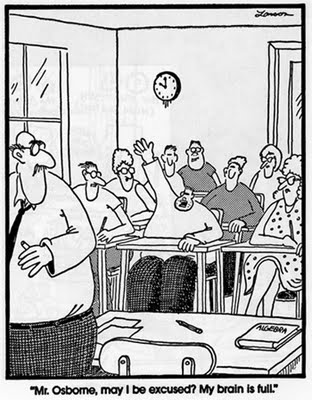Lecture 1 (Sep 5)
We warmed up to the subject with three problems, all of which crucially used the idea of a continuous deformation. The last of these was a clean visual proof of the Fundamental Theorem of Algebra.
Click here for Isa's lecture notes
Lecture 2 (Sep 10)
After discussing the (somewhat incorrect, now fixed!) syllabus, we started in on point set topology. The goal is to capture as much of the theory from real analysis as possible in a more general setting than R. This is most easily done in a space in which we can measure distance. We formalized this notion by defining a metric space. We then gave a bunch of examples which demonstrated (among other things) that a space might have multiple distinct metrics on it and that every space has a metric on it (the discrete metric).
Click here for Isa's lecture notes
Lecture 3 (Sep 12)
After discussing the p-adic metric a tiny bit more, we turned to the topology of abstract metric spaces. We invented reasonable definitions of open and closed sets in terms of the notion of boundary, which we also came up with a definition for. This necessitated us to define the concept of an open ball in a metric space. Throughout, we constructed various intuitive and unintuitive examples.
Click here for Isa's lecture notes
Lecture 4 (Sep 17)
We proved that singleton sets are closed in any metric space. During the course of the proof, we were led to realize the boundary of a singleton might be itself or empty; these considerations led us to define the notion of an isolated point and a limit point. We discussed what happens when we union or intersect closed and open sets. We characterized all the open sets in ℝ with respect to the Euclidean metric; it turns out they're all just countable unions of open intervals. By contrast, there are some really bizarre closed sets out there. As an illustration, we discussed the Cantor set and some of its counterintuitive properties.
Click here for Isa's lecture notes
